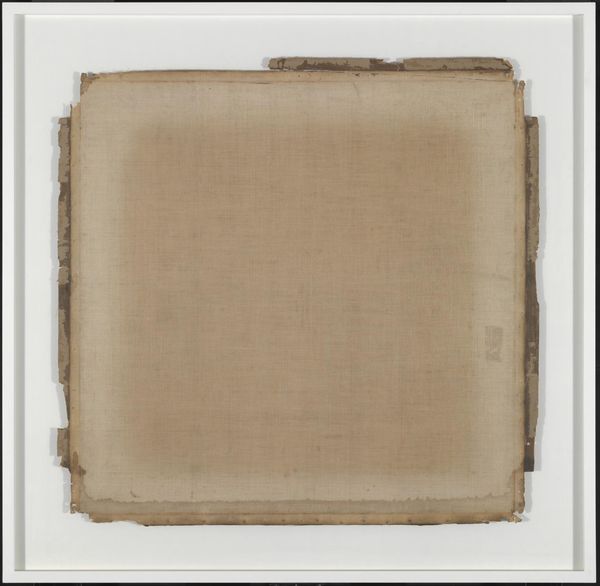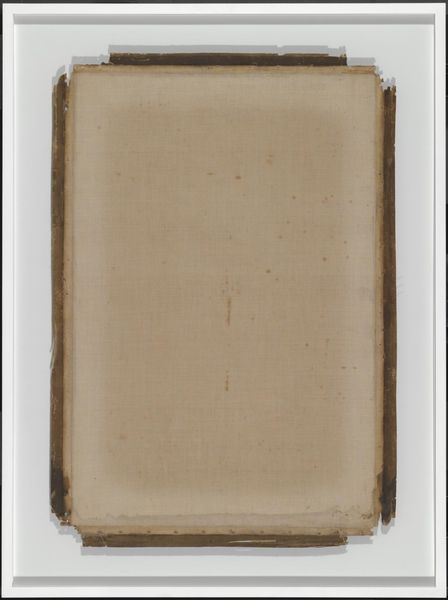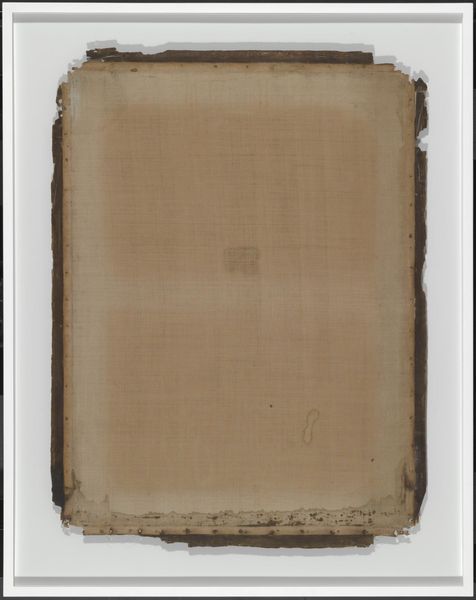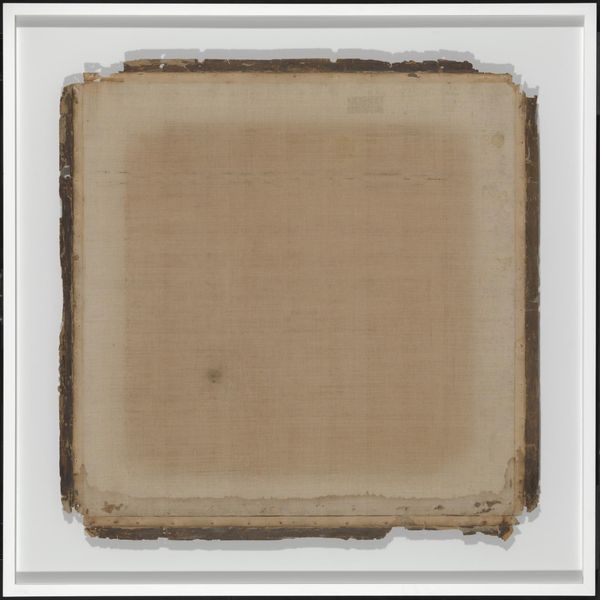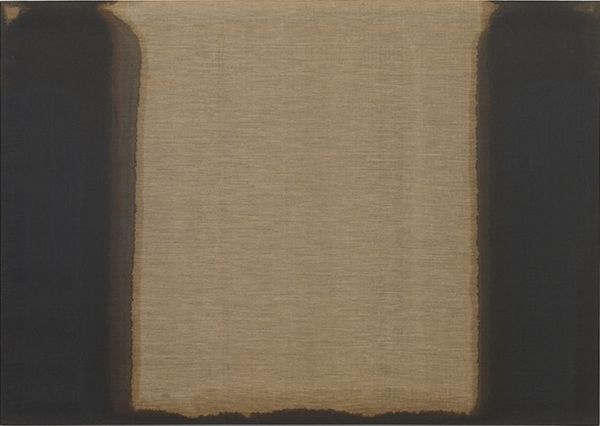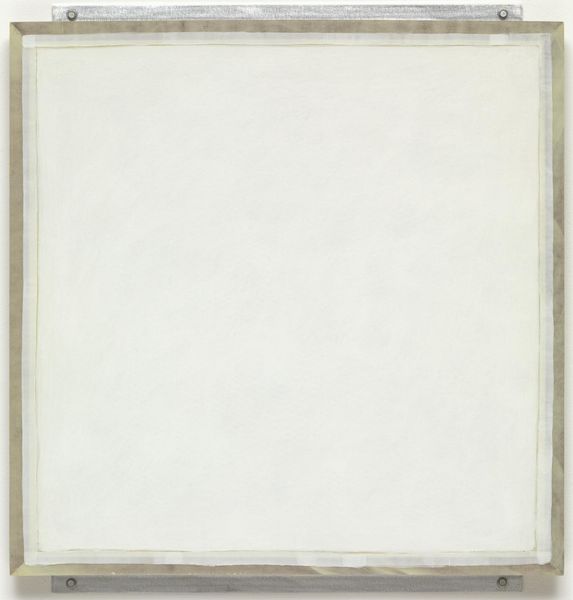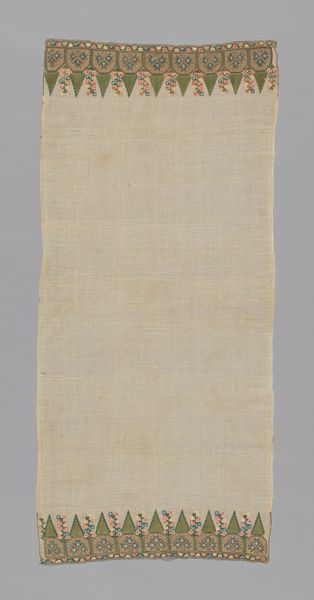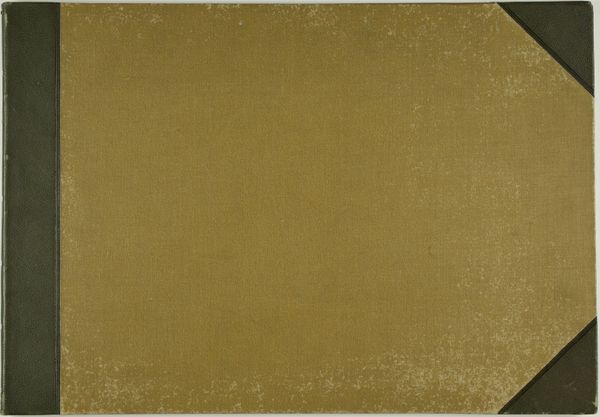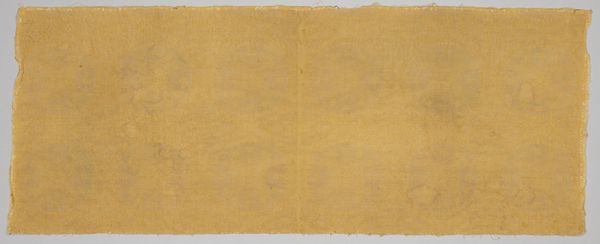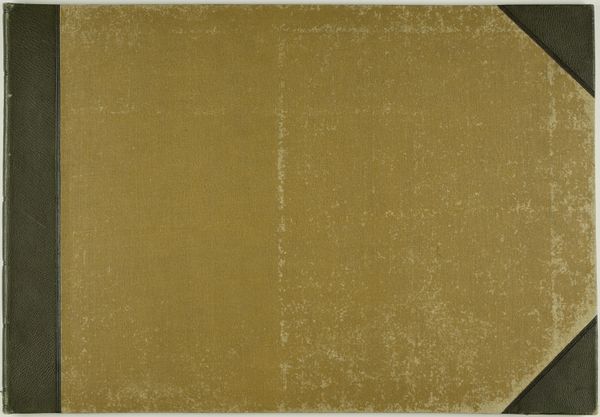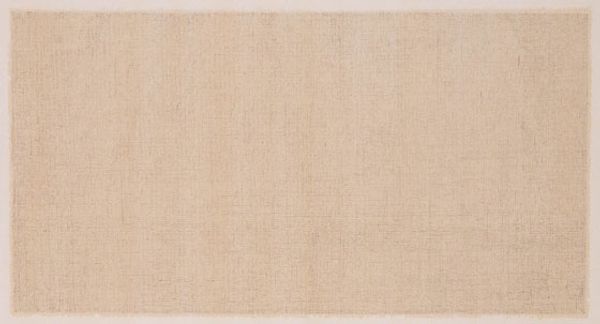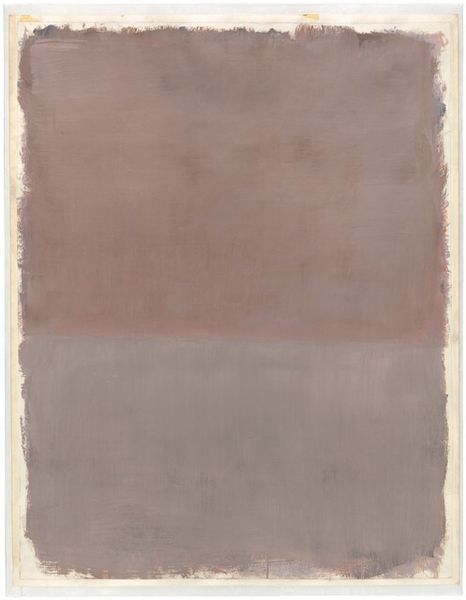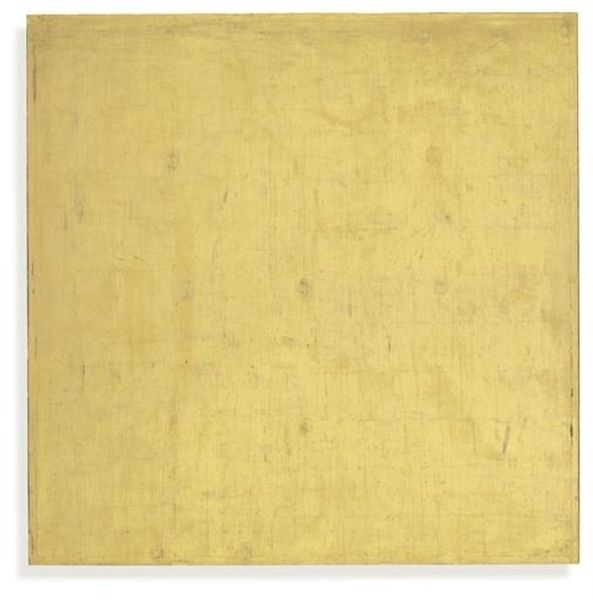
From ‘Mountain Scene with Lake and Hut’ circa 1840-5, JMW Turner, N05476, Tate Collection 1998
0:00
0:00
Dimensions: support: 1005 x 1242 mm frame: 1243 x 1005 x 35 mm
Copyright: © Cornelia Parker | CC-BY-NC-ND 4.0 DEED, Photo: Tate
Curator: Here we have Cornelia Parker's artwork, "From ‘Mountain Scene with Lake and Hut’ circa 1840-5, JMW Turner," part of the Tate Collection. What's your initial reaction? Editor: It's quite stark, almost haunting. The aged canvas, its muted tones, it speaks of absence and lost narratives. Curator: Parker meticulously reclaims remnants, in this case, the back of a Turner canvas. The raw material, the texture—it's all very deliberate. Editor: It makes me think about what we value in art—the finished product versus the process, the visible versus the unseen labor. It's a commentary on art's inherent elitism. Curator: Perhaps. Or perhaps it's about pure form—the grid of the canvas itself, the subtle gradations of color, the way the material absorbs and reflects light. Editor: But can we ignore Turner's legacy? The ghost of his romantic landscapes lingers here, challenged by the deconstruction of Parker's intervention. Curator: Ultimately, this work prompts us to consider what constitutes art itself. Editor: Yes, it urges us to acknowledge the layers of history and the power structures embedded within the art world.
Comments
tate 7 months ago
⋮
http://www.tate.org.uk/art/artworks/parker-from-mountain-scene-with-lake-and-hut-circa-1840-5-jmw-turner-n05476-tate-t07634
Join the conversation
Join millions of artists and users on Artera today and experience the ultimate creative platform.
tate 7 months ago
⋮
From 'Mountain Scene with Lake and Hut' circa 1840-5, JMW Turner, NO5476, Tate Collection 1998Canvas lining, ingrained dust and inkreliefPresented by the artist 2000T07634 Room for Margins became part of Tate's collection under highly individual circumstances. It was first conceived as a temporary installation for Cornelia Parker's 1998 exhibition at the Serpentine Gallery using archive material lent from Tate's conservation department. It comprises six (not seven as detailed in Tate Facts 1998-2000, London 2000) canvas liners and five sets of canvas tacking edges, all removed by conservators in the 1950s and 1960s, due to their deteriorating condition, from paintings by J.M.W. Turner (1775-1851) in Tate's collection. A canvas liner is an unprimed layer of canvas placed over a stretcher before attaching the primed canvas on which the artist paints. This is done to protect the back of the painted canvas and to help keep it flat. Tacking edges are the parts of the canvas which have been folded around the back of the stretcher. Parker first saw the liners and edges in Tate conservation in February 1998 and was intrigued by their fragile beauty. Each liner bears water damage or tearing, and variations in tone and texture reveal the 'ghosted' image of the stretcher, occasionally with the imprint of the cross-brace visible. In Parker's work, each piece is displayed with an adjacent label citing the Turner painting from which it had been removed. The liners act as 'physical stand-ins' or metaphors for 'removal', their deteriorated state an eerie reminder of the vulnerability of works of art and the threat of physical loss. Moreover, Parker's individual framing of each canvas stresses the beauty and power of the liners as visual objects in their own right. Although they have research value as historical items, the liners and tacking edges are classified as residual or support material. Therefore, unlike the 'originals' from which they were removed, they were never accessioned into Tate's collection. By displaying them as a work authored by herself, Parker sought to question that classification and reveal it as arbitrary. The subsequent accessioning of the liners and edges in the form of the installation Room for Margins into Tate Collection adds to this meaning, effecting the shift in their status from temporary to permanent, from secondary to original material. Although the eleven pieces are regarded as part of a single installation, they can also be exhibited in smaller groups of no fewer than five. Room for Margins recalls Parker's longstanding fascination with the positive and negative values that we attribute to materials and the arbitrary basis by which we ascribe them. Her interest in reclaiming the 'waste' or 'disposable' counterparts to products of worth similarily informs her 1996 work Negatives of Sound (Frith Street Gallery), which comprises the black lacquer excreted during the process of cutting grooves into a vinyl record. This strategy of transforming a material's status without enacting any physical change to it provides an interesting complement to Parker's more familiar practice of transforming the value of an object or material through the use of extreme physical force. Examples of the latter include Thirty Pieces of Silver 1989 (Tate T07461) and Cold, Dark Matter: An Exploded View 1991 (Tate T06949). Further reading:Cornelia Parker, exhibition pamphlet, Serpentine Gallery, London 1998, [p.4].Cornelia Parker, exhibition catalogue, Institute of Contemporary Art, Boston 2000, reproduced p.42.Cornelia Parker, exhibition catalogue, Galleria Civica d'Arte Moderna e Contemporanea, Turin 2001, reproduced in colour, p.46. Helen DelaneyDecember 2001
